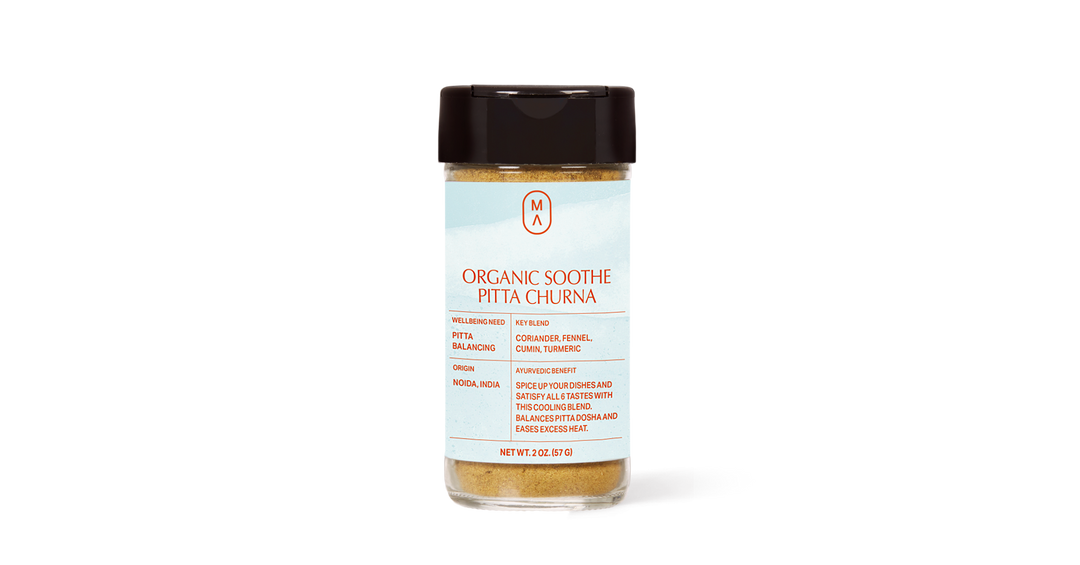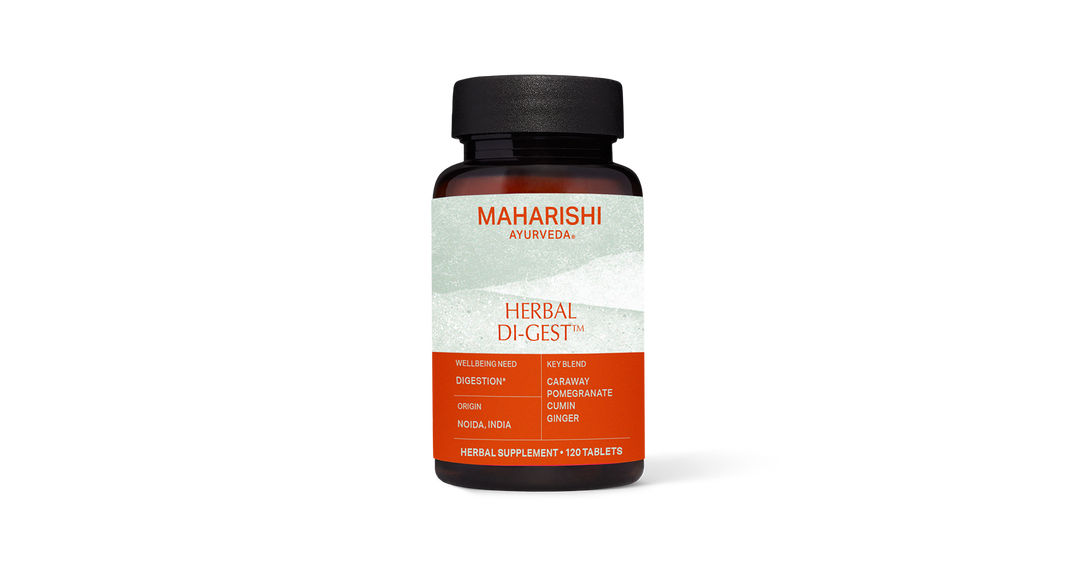How many times have you eaten a meal to re-fuel, only to feel heavy, bloated, and lethargic afterwards?
It's quite common - and according to Maharishi Ayurveda - there are many reasons why this happens. From where the food was grown, to the environment you chow down in, here are 10 ways to gain maximum energy and vitality from the food you eat - as nature intended.
1. The most energizing foods have high prana
Prana is the vital energy present in fresh vegetables and fruits and pure air that we breathe. One of the reasons for eating is to imbibe prana, so you want to choose foods that are high in prana.
Incorporating more fresh vegetables and fruits in your diet will give you an immediate energy boost. It's also important to cut the vegetables and cook them fresh at every meal. Buying pre-cut vegetables means that you have already lost some of the prana. For that reason, buy vegetables and fruits whole for maximum vitality.
2. Eat prana foods: Organic or locally-grown fruits and vegetables
Organic foods have more prana than foods that have been polluted with chemical fertilizers and pesticides. If your body has to work hard to purify the chemicals every time you eat, you'll feel fatigued and toxic.
Locally-grown foods are also higher in prana, because they don't have to be shipped or stored and can be bought tree-ripened. There is another reason to eat locally-grown foods—they contain the same ratio of the five fundamental elements as the climate in which you live.
One Ayurvedic principle says that equal proportions of the elements enhances the food. Locally-grown herbs, fruits, vegetables and dairy products will have a more powerful and energizing biological impact. Herbs and plants grown in the desert are more helpful for the people who live in that kind of dry, hot climate.
This principle doesn't apply to grains or beans, which are grown in different regions. And if you can't get locally-grown veggies or fruits, it's better to eat imported produce. The point here is that if you have a choice, buy or grow local produce for more vitality.
3. Avoid eating dead or unintelligent food
Just as fresh produce has more prana, food that is old, dead, or heavily processed contains very little life force. Frozen, canned, packaged, processed, bottled, fermented or leftover foods are either too old to be healthy, or even worse, have been altered with chemical preservatives and flavorings.
This kind of unintelligent, dead food is difficult to digest and creates ama, which clogs the body's channels and creates fatigue. Choose food that is fresh, whole and unaltered by chemicals or harmful processing methods.
4. Eat an Ayurvedic diet to feel energized
Besides fresh, organic fruits and vegetables, an energizing diet includes whole grains such as quinoa, barley and amaranth.
For protein, organic milk, lassi (a yogurt drink), and paneer (fresh cheese) are energy-producing.
Almonds, cashews, or walnuts are an excellent source of protein if they are soaked first or cooked with the grains to make them more digestible.
Split-mung dal and other small or split beans are an excellent source of protein. Fresh, easy-to-digest oils are another important part of the energizing diet.
Ghee is an excellent cooking oil or baking oil because it doesn't burn at high heat. Extra virgin olive oil from the first press is healthy for baking or sautéing at low temperatures.
5. Eat a variety of foods and tastes
Rather than getting in a rut and just making rice, dhal and the same vegetables every day, be sure to rotate your selection so you are always getting a wide variety of grains, fruits, vegetables, proteins and flavors.
Maharishi AyurVeda recommends that you eat all six tastes—sweet, sour, salty, bitter, astringent and pungent—in every meal. If you are getting bored with your food, or if you are having cravings for unhealthy foods, that's a clue that you are not getting all six tastes.
One way to add more flavor and fun is to use chutneys to complement the food.
6. Cook with energizing spices
Cooking with spices makes the food more digestible and creates energy. The Ayurvedic way to cook with spices is to sauté them at low heat in olive oil and ghee, then stir them into steamed vegetables, cooked grains, or soupy dahls. An alternative method is to sauté the spices in ghee or olive oil and then sauté the raw vegetables, grains or dhal. Add water and cook until tender.
Choose spices that are recommended for your body type. Or use Organic Vata, Organic Pitta or Organic Kapha Churna, which are ready-made spice mixtures.
7. Avoid energy-draining combinations
Avoid foods that don't digest well when combined, called mutually contradictory foods in Maharishi AyurVeda. According to The Council of Maharishi AyurVeda Physicians, combining the following foods creates ama and low energy.
- Milk and salty, sour, bitter, pungent or astringent tastes. The only taste that combines well with milk is some foods from the sweet taste, such as sugar, dates, honey, rice or wheat. For this reason, it's better to drink milk separately from your meals.
- Milk and fish
- Milk and eggs
- Milk and yogurt
- Ghee and honey (when mixed in equal parts)
8. Drink energizing water
Drinking lots of coffee, tea or caffeinated soft drinks may give you a false burst of energy, but caffeine taxes the liver, creating a toxic build-up and fatigue. It's better to drink beverages that clear toxins from the channels of the body, allowing the free flow of prana to revitalize the brain and organs. Raja's Cup, and Organic Vata, Organic Pitta and Organic Kapha Teas are energizing beverages to choose from.
9. Minimize restaurant eating
If you must eat out, choose your restaurant carefully. Keep an eye on the ingredients and cooking methods. Are the ingredients fresh or frozen? Are leftovers served? Are there healthy oils? These are the questions you can ask. If you are traveling or eating out a lot, take Herbal Di-Gest after your meal to improve your digestive power.
10. Eat in a settled atmosphere
Maharishi AyurVeda recommends that you eat in a settled atmosphere to gain maximum vitality from food. If you talk on the phone, watch TV or conduct a business meeting over lunch, your food is not going to digest properly. It will probably create ama, which is the cause of dullness and fatigue.
Eating while standing, walking or driving also creates ama rather than energy. Turn off the electronic devices and eat with someone you care about. Leave your responsibilities at the door—and instead revel in the beautiful colors, tastes, smells and textures of the food. All of this amounts to respecting your food and your digestion, and will help create the kind of light, clear, vital feeling that good food is meant to do.
Diet is the cornerstone of health in Ayurveda. By eating a variety of balanced meals full of organic produce cooked with spices, you can get the precious energy you need for work, fun, and everything in between. Get cooking with delicious, healthy, Ayurvedic recipes on the blog!
© 1999, 2021 Maharishi AyurVeda Products International, Inc. (MAPI). All Rights Reserved. MAPI does not provide medical advice, diagnosis or treatment. These statements have not been evaluated by the Food and Drug Administration. Products are not intended to diagnose, treat, cure or prevent any disease. See additional information.







